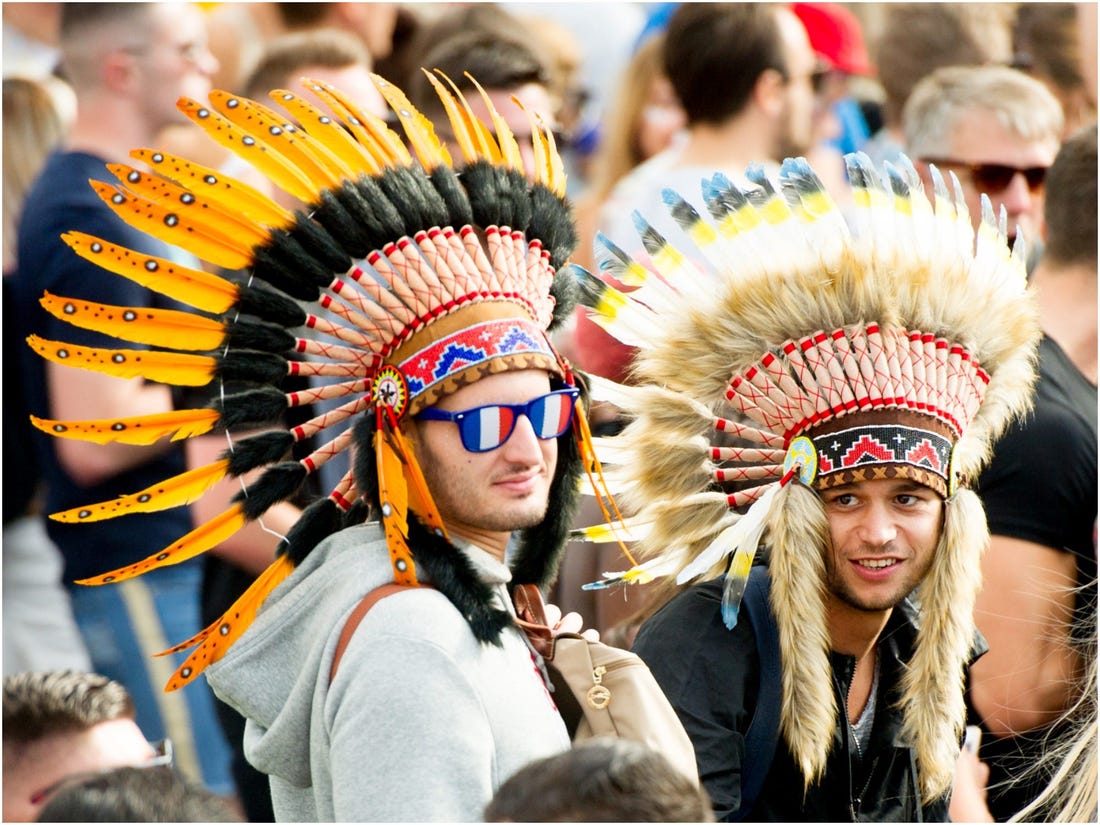Before we can even get started, it's important to understand two terms: ‘Cultural Misappropriation’ versus ‘Cultural Inclusion’. The next step is to see how we can spot when cultural misappropriation (often referred to as cultural appropriation) occurs and what to do about it, while amplifying companies and organizations that work towards cultural inclusion.
The term ‘Cultural misappropriation’ is a form of colonization. Cultural elements are copied from a culture by members of another culture and used outside of their original context. Most commonly done without permission, acknowledgment, or financial compensation.
‘Cultural Inclusion’ is the practice of asking for and receiving permission from members of the originating culture. Honoring and acknowledging them in the marketing of any goods that feature their craft, sharing proceeds or any financial gain, and collaborating on long-term plans to ensure these agreements and fair treatment are upheld over time.
Modern examples of Cultural Misappropriation
Cultural misappropriation is a centuries-old byproduct of colonialism that remains a commonplace practice, with the fashion industry being the primary culprit. So much so that there have been numerous lawsuits against designers.

Urban Outfitters vs. the Navajo People: In 2011, American retailer Urban Outfitters (UA) found itself at the center of a legal dispute after launching a collection named after the Navajo tribe. UA had been using the term “Navajo” since 2001 for apparel and accessories. Then, in 2012, the Navajo tribe decided to take legal action against UA after the latter launched a “Navajo” themed clothing line that included a native headdress, “Navajo print flask,” and “Navajo hipster panty.”

Marant vs. Mixe: In 2015, French label Isabel Marant received significant backlash for copying the 600-year-old traditional red and white embroidery designs of the indigenous Mixe community of Santa Maria Tlahuitoltepec, Mexico in her spring/summer 2015 “Étoile” collection. An authentic huipil blouse would typically cost 300 pesos; Marant’s version retailed for $290, approximately 4,500 pesos.
Mexico’s government has even called out Louis Vuitton for its use of a traditional Mexican pattern in a chair design. To date, the label has yet to respond.
Here is what’s already happening to enact change.
The World Intellectual Property Organization (WIPO) formed an organization to curb these exploitations. In 2000, WIPO created an Intergovernmental Committee on Intellectual Property and Genetic Resources Traditional Knowledge and Folklore (IGC) that established “traditional cultural expressions” (TCEs) as including “music, dance, art, designs, names, signs and symbols, performances, ceremonies, architectural forms, handicrafts, and narratives, or any other artistic or cultural expressions.”
The organization states in their working description that TCEs may be considered as “the forms in which traditional culture is expressed; form part of the identity and heritage of a traditional or indigenous community; are passed down from generation to generation.”
While this program is helpful and encouraging, urging the communities that fall victim to these actions to hire lawyers and incur expensive legal fees is unfair and often unrealistic.
The real solution starts with the designers and business owners who financially back these creations.

The tip of the iceberg.
We’re not here to fault designers and big business by labeling them heretics for doing what they did; everyone has blind spots and makes mistakes. If we engage in cancel-culture, we offer no opportunity for growth, change, and redemption.
Now, we have the opportunity to encourage small businesses and designers to start new brands that incorporate culture and traditional handmade art as a part of their commercial plan in a way that can benefit everyone.
Inspiration, trade, collaboration, and knowledge transfer is what has allowed the human race to flourish the way that it has. It’s that exchange that could advance our species for good, preserving our traditions, innovating technologies that raise the economic floor, and heal the planet. The solution is awareness, access to facts, and individuals making an effort to educate themselves and choose a side that aligns with the values of protecting what we have.
To see how Ethnotek practices Cultural Inclusion, checkout our Sourcing Roadmap HERE.
Citations:
https://www.theguardian.com/us-news/2016/nov/18/urban-outfitters-navajo-nation-settlement

